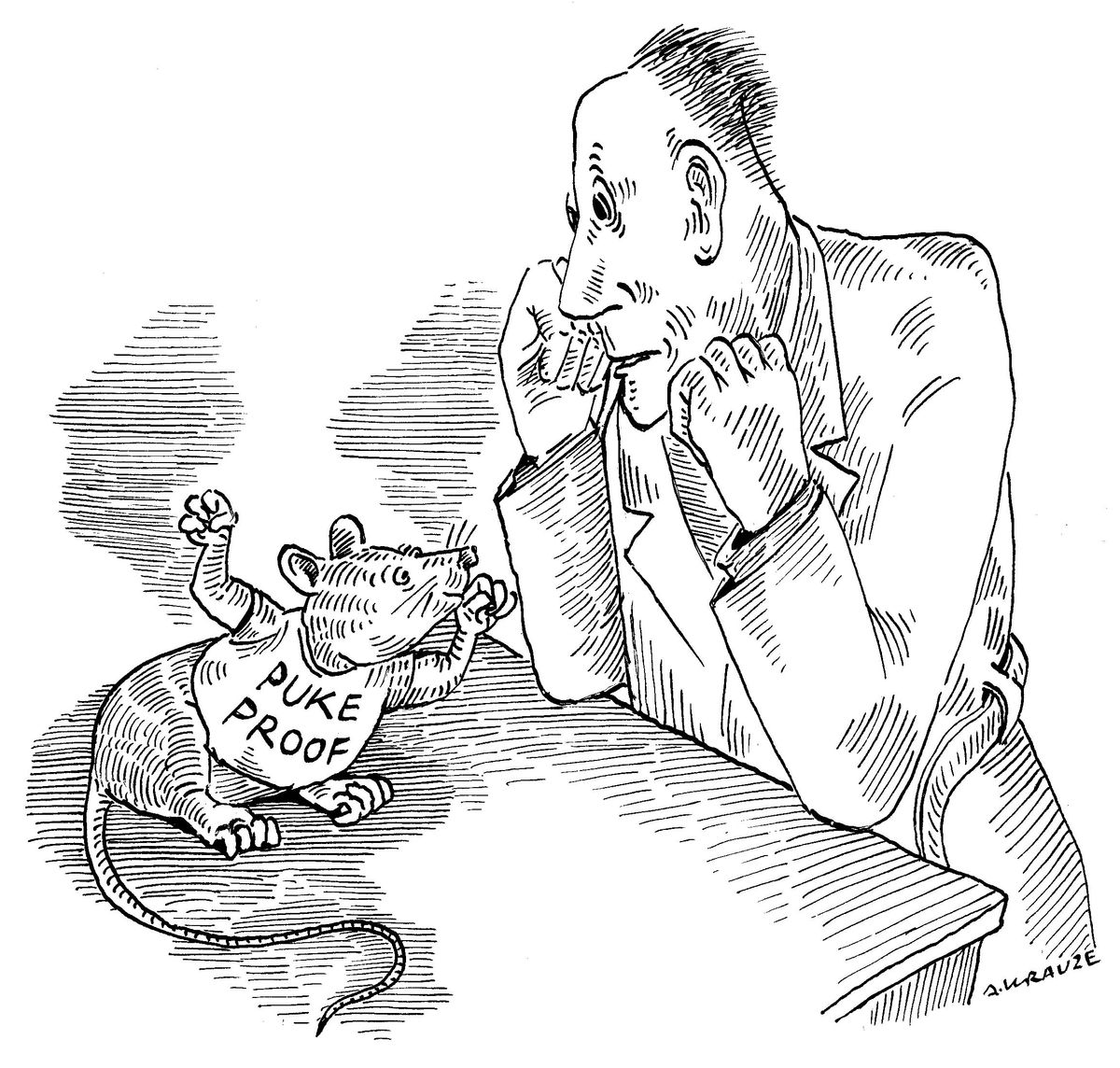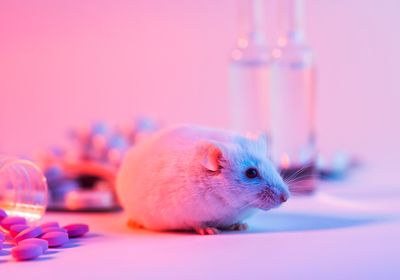ABOVE: © ISTOCK.COM, Evgenyi_Eg
For more than 15 years, I have had the pleasure of helping The Scientist cover everything from breaking news on an emerging pandemic to the latest research breakthroughs that chip away at long-standing mysteries. Depending on the day, this job is a mixture of challenging, delightful, and enlightening. Some days are more challenging. Others contain more delights. But one thing has remained constant throughout the entirety of my tenure at this publication: Science and the world it probes never cease to amaze me.
Recently, I have been reminded of this fact in a beautifully mundane way. During an early-November news meeting—the type we hold weekly to explore the life science research goings-on—members of the editorial staff discussed a study that purported to uncover the neural circuitry responsible for controlling vomiting. The research, published in a November issue of Cell, used mice as experimental models. The authors of the paper exposed the animals to bacterial toxins and a chemotherapeutic drug to induce a behavioral reaction, and then traced the signaling cascade that caused the response.
But here’s the catch: Mice can’t vomit. It’s not that they won’t vomit or that it’s exceedingly difficult to elicit that particular behavior in Mus musculus. Mice, by dint of their physiology, cannot vomit. Now, anyone who writes about or conducts science, especially biomedical science, is fully aware that the humble mouse is one of, if not the, most common experimental organisms. We at The Scientist are virtually awash in mice, as our remit is to cover basic biological research, for which mice have long served as subjects. And yet, this simple fact of mouse biology had escaped my appreciation for all these years.

That physiological reality stopped me in my tracks. How did modern mice, not to mention their evolutionary ancestors, persist without the capacity to forcefully eject toxins or otherwise unpalatable substances from their digestive tracts? What, indeed, does a mouse do when it finds itself in the precarious position of having ingested something that might cause many other mammals to lose their lunch, perhaps saving their lives in the process?
These questions pestered me enough to do some cursory reconnaissance, which taught me that mice aren’t the only species in that particular boat. Rodents writ large—squirrels, rats, gophers, etc.—can’t vomit. Horses, too, are part of the puke-proof club. Fascinating. And it was only recently that researchers began to explore why it is that rodents lack what would seem to be an advantageous reflex. (Spoiler alert: The answer lies deep within the brain stem, where the neurological components necessary to initiate vomiting appear to be missing.)
With regard to the recent study, deftly covered for our website by intern Katherine Irving, the authors creatively circumnavigated the curious murine deficiency by using a proxy for nausea involving contorted facial expressions and contracted abdominal muscles. The rest is living history, with a neatly described pathway from toxin to serotonin to a specific region of the mouse brain, which houses neurons that fire to initiate retching.
This particular example involves me, a nonscientist, being caught off guard by a scientific fact that is surely known by a great many scientists. Nevertheless, learning something so fundamental about the biology of a ubiquitous laboratory animal reminded me that, for all that humanity has learned about the natural world, surprises still abound. If we extend the perimeters of our inquiry beyond Earth and into the universe, there are even more massive unknowns. Dark matter, dark energy, the nature and lifespan of black holes, just to name a few.
It’s an exciting and oddly comforting feeling to know that we don’t need to peer into the darkest reaches of space to feel afloat in a sea of potential knowledge. We can find pockets of discovery and astonishment much closer to home. In mice, for example. And deep within the cells and molecules of our own bodies—indeed, within the very brains we use for all this puzzling—lie mysteries untapped, insights waiting to be unearthed.
I am moving on from The Scientist, and I leave behind a body of work that I hope captures my wonder and amazement with the natural world and of the concerted human effort to understand its intricacies. But I sincerely hope I never move past the giddy fascination that I feel whenever I brush against individuals driven by a similar impulse, be they science journalists covering emerging concepts or researchers on the front lines of discovery.
Bob Grant
Editor-in-Chief





